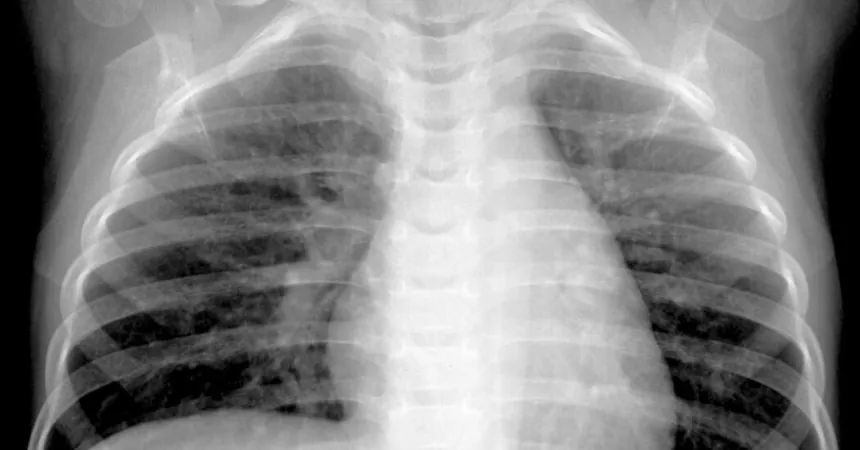
What You Need to Know About the HMPV Outbreak in China: Is It Cause for Alarm?
2025-01-07
Author: Chun
What Exactly is HMPV?
HMPV is one of the many pathogens that can cause respiratory diseases globally. It’s quite common, with most individuals contracting it during childhood. The virus often circulates seasonally, mimicking influenza trends in colder climates, while it remains active throughout the year near the Equator.
The symptoms induced by HMPV are similar to those associated with other respiratory viruses, such as cough, fever, nasal congestion, and wheezing. Most infections are mild, akin to the common cold, although severe cases can lead to bronchitis or pneumonia, especially in infants, the elderly, and individuals with compromised immune systems or chronic respiratory conditions.
Mortality related to HMPV is generally low in high-income countries but can be a concern in regions with limited healthcare resources.
How Long Has HMPV Been in Circulation?
Identified in 2001, HMPV has likely been affecting humans for about 60 years. Despite its existence, the virus receives little attention compared to influenza or Covid-19. Dr. Leigh Howard, an infectious disease specialist, highlights that many infections go undiagnosed because routine testing for HMPV isn’t common in clinical settings.
Transmission and Prevention
HMPV spreads through respiratory droplets from coughing, sneezing, direct contact with infected individuals, or surfaces contaminated with the virus. There is currently no vaccine specifically for HMPV, but researchers are exploring the development of a combined vaccine for HMPV and respiratory syncytial virus (R.S.V.), a related pathogen.
Current Situation in China
Chinese health officials have acknowledged a rise in HMPV cases, particularly among children under 14 years old, with a notable spike in northern regions. Kan Biao, a director at the Chinese CDC, stated that as of late December, cases had been increasing and cautioned that gatherings during the upcoming Lunar New Year holidays may lead to further spread.
Officials maintain that the current respiratory disease situation is manageable and forecast a lower scale and intensity of respiratory infections compared to the previous year. In light of rising cases, the Chinese government has planned a robust monitoring system for pneumonia of unknown origin to enhance surveillance and health responses.
Public Reaction and Concerns
The public's response has been a mix of concern and humor, with many expressing unfamiliarity with HMPV on social media platforms. In various online forums, some jokingly referenced their unused masks from the Covid-19 pandemic while others reported an increase in general illness symptoms.
Amidst the public chatter, state media has sought to calm anxiety, advising against impulsively taking antiviral drugs.
What Does the World Health Organization Have to Say?
The World Health Organization has not raised alarms regarding HMPV. Dr. Margaret Harris noted that the increase in cases aligns with usual patterns seen in winter months in the Northern Hemisphere. The WHO continues its communication with Chinese health authorities and has received no indications of unusual outbreak patterns or overwhelmed healthcare systems.
Should You be Concerned?
While the recent reports echo early Covid-19 fears, experts emphasize that HMPV is a well-known virus. There is no indication of the same level of severity or public health threat posed by the coronavirus five years ago. As the situation develops, maintaining basic hygiene practices such as frequent handwashing and avoiding crowded spaces remains a prudent approach for public health.
In conclusion, while vigilance is necessary, the current spike in HMPV cases in China does not appear to warrant the alarm of newer, unknown pathogens. Stay informed, stay safe, and let’s hope for a smooth resolution to this seasonal outbreak!


 Brasil (PT)
Brasil (PT)
 Canada (EN)
Canada (EN)
 Chile (ES)
Chile (ES)
 Česko (CS)
Česko (CS)
 대한민국 (KO)
대한민국 (KO)
 España (ES)
España (ES)
 France (FR)
France (FR)
 Hong Kong (EN)
Hong Kong (EN)
 Italia (IT)
Italia (IT)
 日本 (JA)
日本 (JA)
 Magyarország (HU)
Magyarország (HU)
 Norge (NO)
Norge (NO)
 Polska (PL)
Polska (PL)
 Schweiz (DE)
Schweiz (DE)
 Singapore (EN)
Singapore (EN)
 Sverige (SV)
Sverige (SV)
 Suomi (FI)
Suomi (FI)
 Türkiye (TR)
Türkiye (TR)
 الإمارات العربية المتحدة (AR)
الإمارات العربية المتحدة (AR)